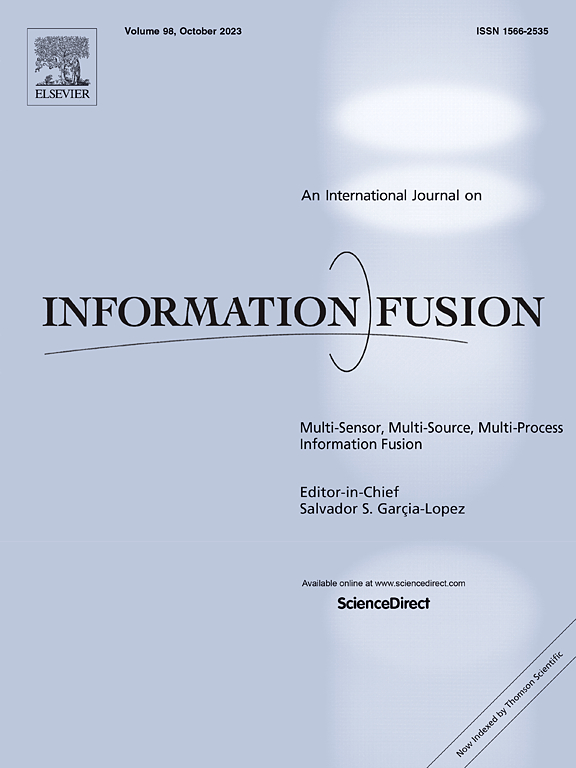Vehicle localization in an explainable dynamic Bayesian network framework for self-aware agents
IF 14.7
1区 计算机科学
Q1 COMPUTER SCIENCE, ARTIFICIAL INTELLIGENCE
引用次数: 0
Abstract
This paper proposes a method to perform Visual-Based Localization within an explainable self-awareness framework, by combining deep learning with traditional signal processing methods. Localization, along with anomaly detection, is an important challenge in video surveillance and fault detection. Let us consider, for example, the case of a vehicle patrolling a train station: it must continuously know its location to effectively monitor the surroundings and respond to potential threats. In the proposed method, a Dynamic Bayesian Network model is learned. A vocabulary of clusters is obtained using the odometry and video data, and is employed to guide the training of the video model. As the video model, a combination of a Variational Autoencoder and a Kalman Filter is adopted. In the online phase, a Coupled Markov Jump Particle Filter is proposed for Visual-Based Localization. This filter combines a set of Kalman Filters with a Particle Filter, allowing us to extract possible anomalies in the test scenario as well. The proposed method is integrated into a framework based on awareness theories, and is data-driven, hierarchical, probabilistic, and explainable. The method is evaluated on trajectories from four real-world datasets, i.e., two terrestrial and two aerial. The localization accuracy and explainability of the method are analyzed in detail. We achieve a mean localization accuracy in meters of 1.65, 0.98, 0.23, and 0.87, on the four datasets.
基于自感知智能体的可解释动态贝叶斯网络框架下的车辆定位
本文提出了一种将深度学习与传统信号处理方法相结合的方法,在可解释的自我意识框架内执行基于视觉的定位。定位和异常检测是视频监控和故障检测中的一个重要问题。例如,让我们考虑一下在火车站巡逻的车辆的情况:它必须不断地知道自己的位置,以便有效地监测周围环境并对潜在的威胁作出反应。该方法学习了一个动态贝叶斯网络模型。使用里程计和视频数据获得聚类词汇表,并用于指导视频模型的训练。视频模型采用变分自编码器和卡尔曼滤波相结合的方法。在在线阶段,提出了一种基于视觉定位的耦合马尔可夫跳变粒子滤波器。这个过滤器结合了一组卡尔曼滤波器和一个粒子滤波器,使我们能够在测试场景中提取可能的异常。该方法集成到基于感知理论的框架中,具有数据驱动、分层、概率和可解释性等特点。该方法在来自四个真实世界数据集的轨迹上进行了评估,即两个地面和两个空中数据集。详细分析了该方法的定位精度和可解释性。在4个数据集上,我们的平均定位精度分别为1.65、0.98、0.23和0.87米。
本文章由计算机程序翻译,如有差异,请以英文原文为准。
求助全文
约1分钟内获得全文
求助全文
来源期刊

Information Fusion
工程技术-计算机:理论方法
CiteScore
33.20
自引率
4.30%
发文量
161
审稿时长
7.9 months
期刊介绍:
Information Fusion serves as a central platform for showcasing advancements in multi-sensor, multi-source, multi-process information fusion, fostering collaboration among diverse disciplines driving its progress. It is the leading outlet for sharing research and development in this field, focusing on architectures, algorithms, and applications. Papers dealing with fundamental theoretical analyses as well as those demonstrating their application to real-world problems will be welcome.
 求助内容:
求助内容: 应助结果提醒方式:
应助结果提醒方式:


